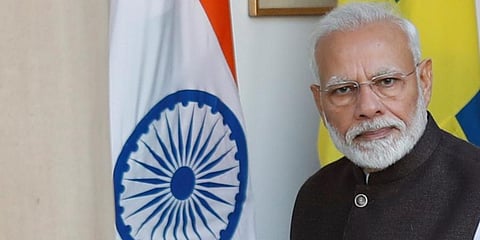

Amid the economic slowdown, India Inc and the general public are eager to see how Finance Minister Nirmala Sitharaman addresses the situation through the Union Budget. Sitharaman, who presented her maiden budget last year, is the second woman to do so after former Prime Minister Indira Gandhi.
Since the NDA came to power in 2014, the Modi government has brought in several changes in the budget -- both in terms of style and substance. Here's a list:
Budget date
In 2017, the date on which the budget is presented was changed to February 1 from the last working day of February.
Jettisoning the briefcase
In 2019, Finance Minister Nirmala Sitharaman decided to end the age-old tradition of carrying the budget documents in a leather briefcase. Instead, she brought a folder wrapped in a red cloth. Chief Economic Advisor K Subramanian said, "It is an Indian tradition which symbolizes our departure from the slavery of Western thought. It is not a budget but a 'bahi khata'(ledger)."
Merger of Railway and Union Budgets
Till 2017, the Railway Budget was presented a few days before the Union Budget but this tradition was broken by the NDA government. On September 21, 2017, the Modi government approved the merger of the Railway and Union Budgets from the following year, scrapping a 92-year-old policy.
Income tax limit
In 2014, former Finance Minister Arun Jaitley raised the personal income tax limit to Rs 2.5 lakh from Rs 2 lakh. For senior citizens, it was raised to Rs 3 lakh from Rs 2.5 lakh.
Surcharge on super-rich
In the 2016 Union Budget, the Modi government raised the surcharge for those who earn more than Rs 1 crore to 15 per cent from 12 per cent. The NDA also introduced a surcharge of 10 per cent in 2017 on those with an annual taxable income between Rs 50 lakh and Rs 1 crore. In 2019, the surcharge for those earning between Rs 2 crore and Rs 5 crore was increased to 25 per cent from 15 per cent, while the surcharge for those earning above Rs 5 crore was increased to 37 per cent from 22 per cent.
Tax rate cut
One of the most welcomed changes was the tax rate cut that the Modi government introduced in 2017. The rate was cut to 5 per cent from 10 per cent for those whose income falls between Rs 2.5 lakh to Rs 5 lakh.
Abolition of wealth tax
While the income tax slabs remained unchanged, a big move was the abolition of wealth tax that was replaced by an additional surcharge on people with a taxable income of more than Rs 1 crore. Moreover, Jaitley increased the deduction limit on the health insurance premiums and the transport allowance exemption. He also announced an additional deduction of Rs 50,000 for contributions under the National Pension Scheme.